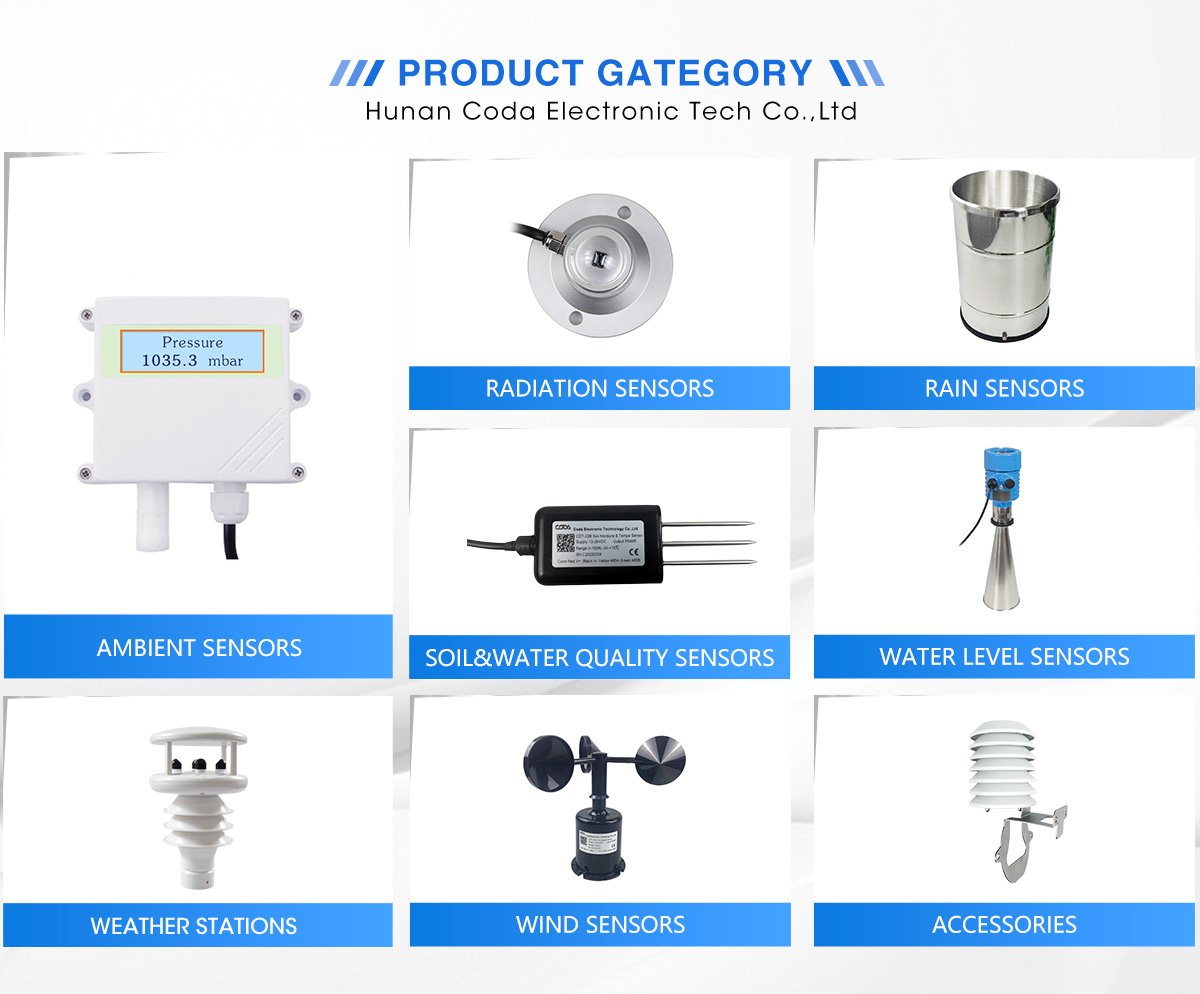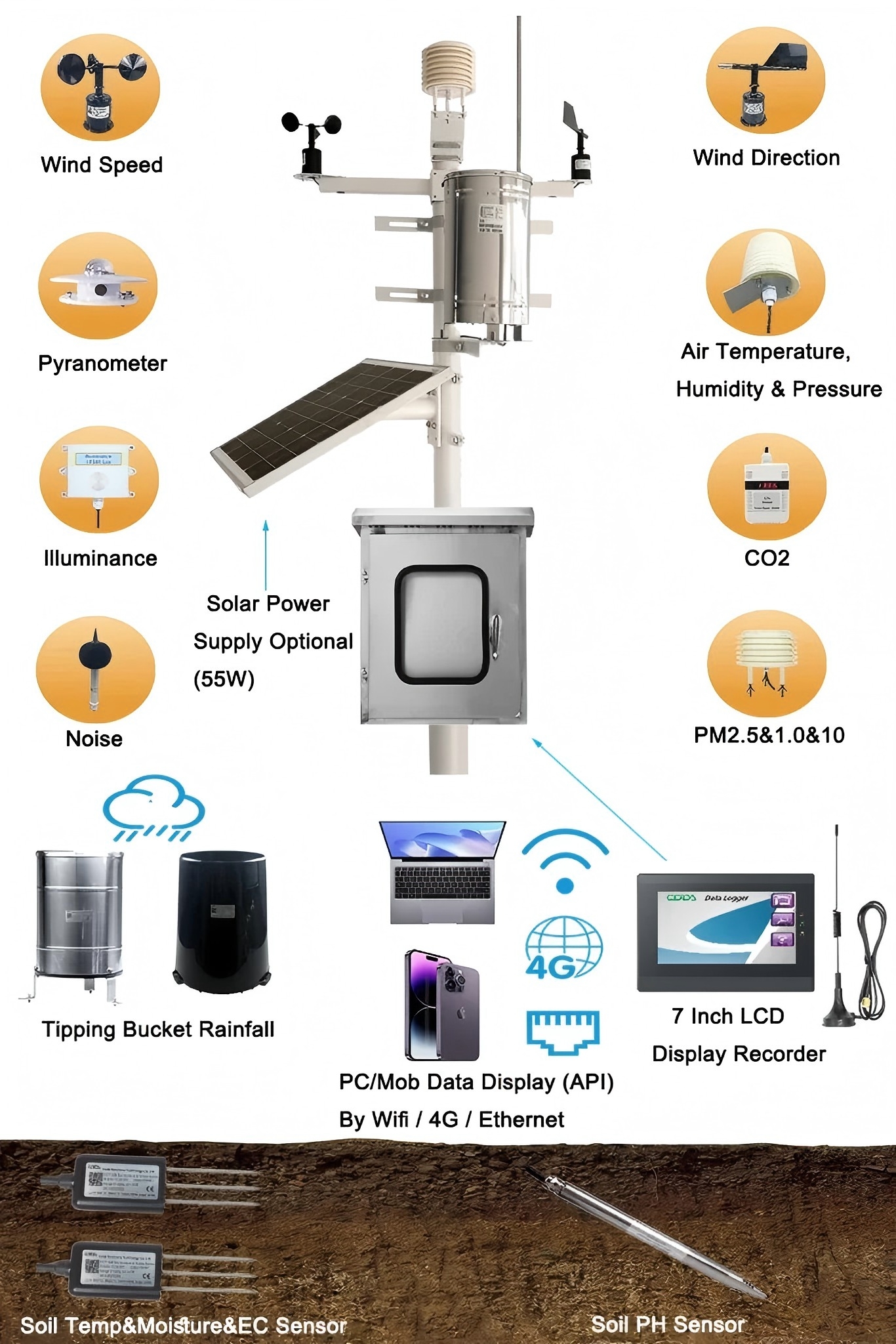In today’s world, weather data is crucial. It helps many industries make smart decisions. These industries include agriculture, construction, aviation, energy, and environmental research. To obtain accurate and reliable weather data, it’s essential to use weather-measuring instruments.
These instruments help monitor atmospheric conditions such as temperature, humidity, wind speed, pressure, and more, providing valuable insights for businesses and individuals alike. In this article, we will look at the different types of weather instruments. We will also discuss why they are important for accurate weather forecasting.
Weather-measuring instruments are devices used to collect data on different atmospheric parameters, such as wind speed, temperature, humidity, air pressure, and precipitation. Various fields, including meteorology, agriculture, construction, and environmental monitoring, can use these instruments. Thanks to new technology, these tools are now more accurate and automated. They also connect to cloud platforms for real-time monitoring and analyzing.

Thermometers:
Measuring Temperature A thermometer is one of the most commonly used weather-measuring instruments for monitoring temperature. Temperature is an important part of the weather. It affects many activities, like farming and daily business operations.
Modern thermometers at weather stations are extremely accurate. They give real-time temperature readings, which are important for predicting weather patterns.
Hygrometers:
Measuring Humidity Hygrometers are devices used to measure the moisture content in the air, commonly referred to as humidity. Humidity plays a significant role in weather forecasting as it influences weather patterns, including rainfall and cloud formation. Hygrometers can be digital or analog, and people often integrate them into automatic weather stations (AWS) for continuous monitoring.
Barometers:
Barometers measure atmospheric pressure, which serves as a key indicator of weather changes. A sudden drop in air pressure often means a storm is coming.
An increase in pressure usually means good weather. Barometers come in two main types: mercury barometers and aneroid barometers. These tools are essential for meteorologists forecasting weather trends.
Anemometers:
An anemometer measures wind speed and, in some cases, wind direction. Wind plays a significant role in shaping weather conditions, especially in areas prone to hurricanes, cyclones, or tornadoes.
Cup anemometers and vane anemometers are the most common types. They give important data for weather stations. This is especially true in outdoor places like wind farms or construction sites.
Rain Gauges:
Measuring Precipitation A rain gauge is a device used to measure the amount of rainfall over a specific period. Rainfall data is important for many uses.
It assists in determining the water requirements for crops. It also helps predict floods in areas that are likely to flood. Rain gauges can be manually operated or automatic, with the latter being more efficient for continuous, real-time monitoring.
Pyranometers:
Measuring Solar Radiation
Pyranometers measure solar radiation. This means they track the amount of sunlight hitting a surface. Solar radiation data is essential for applications in solar energy production, agriculture, and environmental research. These instruments provide insight into how much sunlight is available for photosynthesis and energy generation, making them indispensable in renewable energy monitoring.
Integrated Systems for Comprehensive Monitoring An automatic weather station (AWS) is a fully integrated system that combines various weather-measuring instruments into one platform. These systems can measure many atmospheric factors. These include temperature, humidity, pressure, wind speed, solar radiation, and rainfall.
AWSs are extremely useful. They collect, process, and send data to cloud platforms on their own. This allows for real-time data analysis.
By incorporating multiple sensors, AWSs provide comprehensive weather data, which is ideal for industries like agriculture, renewable energy, and construction. You can also connect modern weather stations to the Internet of Things (IoT). This lets you monitor them from anywhere.
Accurate Weather Forecasting
The primary purpose of weather-measuring instruments is to provide accurate and reliable data for weather forecasting. Meteorologists rely on data from various weather-measuring instruments to predict weather conditions, including temperature fluctuations, storm development, and precipitation patterns. This helps businesses, governments, and individuals prepare for adverse weather events, ensuring safety and efficient operations.
Environmental Monitoring
Weather-measuring instruments are vital for monitoring environmental conditions. This data is crucial for assessing the health of ecosystems, managing water resources, and tracking climate change. Instruments like pyranometers and rain gauges give important information about solar radiation and rainfall. This information helps us understand environmental changes and their effects on natural resources.
Agricultural Management
Accurate weather data is essential for farmers and agricultural professionals. Instruments like rain gauges, thermometers, and humidity sensors help determine the best times for planting, watering, and harvesting crops. Farmers can improve crop yields by watching the weather. They can also use less water and lessen the impact of extreme weather, like droughts or frosts.
Energy Production
Renewable energy industries, especially wind and solar energy, rely heavily on weather-measuring instruments to optimize energy production. Wind turbines, for example, require precise wind speed data from an anemometer to ensure efficient operation. Similarly, solar power plants use pyranometers to measure solar radiation and determine the best placement for solar panels to maximize energy generation.
Safety and Risk Management
Weather-measuring instruments are crucial for ensuring safety in high-risk industries, including construction, aviation, and maritime operations. By watching weather factors like wind speed, pressure, and rain, companies can reduce risks from extreme weather. This helps prevent accidents and keeps workers safe.

When selecting weather-measuring instruments, it's important to consider the specific needs of your industry or project. Automatic weather stations provide a complete way to monitor weather all the time. Individual tools like wind sensors, thermometers, and rain gauges give specific data for special uses.
If you need reliable and accurate weather instruments, Coda Sensor has advanced weather stations and sensors. You can customize these to fit your needs. Coda Sensor offers the best solution for businesses that want to improve their weather monitoring. It uses real-time data collection, cloud integration, and high-quality sensors.
In conclusion, weather-measuring instruments are critical for obtaining accurate data on atmospheric conditions, enabling businesses, industries, and governments to make informed decisions. From wind sensors to automatic weather stations, these tools give important information. This helps improve operations, enhance safety, and increase efficiency. No matter if you work in agriculture, energy, or environmental monitoring, the right weather tools can help you succeed.
Maximize fugitive dust control with integrated P
Discover how IoT soil pH sensors revolutionize s
A deep dive comparison of Ultrasonic, Radar, and
Contact: Molly
Phone: +86-17775769236
Tel: 86-0731-85117089
Email: molly@codasensor.com
Add: Building S5, Aux Square, Yuelu District, Changsha City, Hunan Province, China
We chat